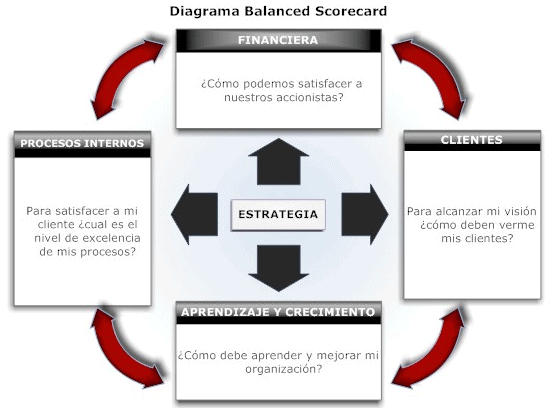The key to successful financial planningis the choice of the appropriate budgeting method, and the fact is that, over time, different budgeting approaches have been developed, each with its particularities, advantages and challenges.
Advertisements

These methods seek to adapt to the changing nature and needs of organizations, and By deeply understanding these methods, from traditional to activity-based budgeting, you can select the most suitable tool, thus optimizing financial management and aligning it with the entity's strategic objectives.
Let's get to know 10 types of budgeting methods.
In this article you will find:
What is a budget?
He budget is a strategic financial management tool that projects and plans the income and expenses of an entity,
This instrument, based on previous analysis and future projections, allows organizations to efficiently allocate their resources, monitor their economic performance and make informed decisions.
The budget process goes beyond simple numerical calculations, it involves the evaluation of objectives, the prioritization of initiatives and alignment of organizational strategy with financial expectations.
11 Types of budgeting methods
There are different types of budgeting methodswhich can be used alone or in combination, depending on the needs and context of the organization, these are:
1. Incremental or traditional budget
He incremental or traditional budget It is a method of financial planning where the previous year's budget serves as the basis for the current year.
For it, adjustments are made, whether increments or decrements, Based on perceived needs or expected changes, this method is common in organizations where operations remain relatively constant from year to year.
Although it is simple and easy to implement, it can perpetuate inefficiencies, since it does not question expenses previous and focuses mainly on marginal changes rather than a complete overhaul of the needs.
2. Zero Base Budget (PBC)
He zero based budget (PBC) is a financial planning method that requires each department to justify and prioritize all their expenses from scratch, without considering the previous year's budget; Instead of starting from previous figures, each expense item must be evaluated and validated for its relevance and value in the current period.
PBC promotes efficiency and optimal resource allocation by forcing organizations to critically examine their operations and expenses. However, it can be laborious and time-consuming, as every financial detail needs to be justified.
3. Activity-based budgeting (PBA)
He Activity-based budget (PBA) is a financial planning approach that focuses on the activities and processes that an organization carries out; Instead of allocating resources based simply on departments or historical spending categories, the PBA distributes funds according to activities that generate value.
This method allows for a deeper understanding of costs and how they relate to activities. specific, facilitating the identification of inefficiencies, redundancies and opportunities for optimization; Thus, the PBA better aligns resources with strategic objectives and improves accountability and transparency in cost allocation.
4. Flexible budget
Heflexible budget It is a financial planning tool that adapts income and expenses according to different levels of activity or volume, and unlike a static budget, which is based on a single projection, the flexible budget is adjusted according to real variations in production or sales.
This allows organizations to have a more accurate comparison between planned and actual costs, taking into account different levels of activity; Its flexibility makes it especially useful for companies with significant fluctuations in their operations, facilitating better management and control of costs based on changing conditions From the market.
5. Capital budget
He capital budget It is a financial planning process that focuses on the allocation of resources for long-term investments, such as the acquisition of fixed assets, expansion projects or research and development; These decisions have significant financial implications and lasting effects on a company's position and competitiveness.
The capital budget evaluates the viability and profitability of the proposed investments, using tools such as net present value or internal rate of return; Through this process, organizations determine which projects to undertake, ensuring they align with their strategic objectives and maximize shareholder value.
6. Operating budget
He operating budget It is a financial planning tool that details the income and expenses associated with the daily operations of an organization for a specific period, usually a year; reflecting the main activities of the business, such as sales, production, marketing and administration.
This budgeting method focuses on short-term profitability and in ensuring that the company has the necessary resources to function efficiently.
Through regular monitoring of the operating budget, companies can identify deviations, make informed decisions and adjust strategies according to changing market conditions, thus ensuring the achievement of your financial objectives and operational.
7. Financial budget
He financial budget It is a planning tool that projects the financial expectations of an organization for a future period, typically one year, focused on overall financial health, estimates income, expenses, cash flows, and resulting equity position; It includes components such as the projected income statement, cash flow budget, and projected balance sheet.
This tool is essential to ensure that the company will have the necessary liquidity to operate, to evaluate financing or investment needs and to establish profitability goals. Through monitoring, organizations can adjust strategies to meet financial objectives.
8. Cash flow budget
He cash flow budget It is a financial tool that projects the inflows and outflows of money from an organization over a given period, its main objective is to ensure the necessary liquidity to cover short-term obligations; detailing when and where the income will come from and when and what the cash will be spent on.
By monitoring and comparing projected to actual cash flows, Companies can anticipate liquidity challenges, make informed decisions on investments, financing and operations, and guarantee solvency and financial stability over time. It is essential for effective working capital management.
9. Long-term strategic budget
The long-term strategic budget is a planning tool that projects the financial and operational goals of an organization over a time horizon extended, usually three to five years; Well, it goes beyond daily operations, focusing on the global vision and objectives strategic business, considering external factors, market trends, and possible scenarios futures.
Through this budget, companies chart a path to achieve sustained growth, expansion, and adaptation to changes in the environment. It is essential to anticipate investments, financing and necessary resources, aligning financial decisions with the organization's long-term strategy.
10. Master budget
He master budget It is a comprehensive financial document that consolidates all individual budgets of an organization for a given period, usually one year; It acts as a financial map, combining projections of income, expenses, investments and financing.
This budget is made up of the operating budget, which details daily operations, and the financial budget, which reflects cash flow expectations, income statement and balance sheet general.
This tool allows senior management to have a global vision of the projected performance of the company, facilitating strategic decision making and ensuring alignment with corporate objectives.
11. Participatory budget
He participatory budget it's a democratic and collaborative process in which employees, departments or even citizens are actively involved in the preparation and decision of the budget.
Rather than being dictated exclusively by senior management or government, this approach seeks to gather opinions, priorities and knowledge from a broader range of participants.. This inclusion allows for greater transparency, understanding and commitment to financial decisions. In municipal contexts, it empowers the community to decide on the allocation of resources in local projects. In companies, it promotes responsibility and better aligns operational goals with financial goals.


